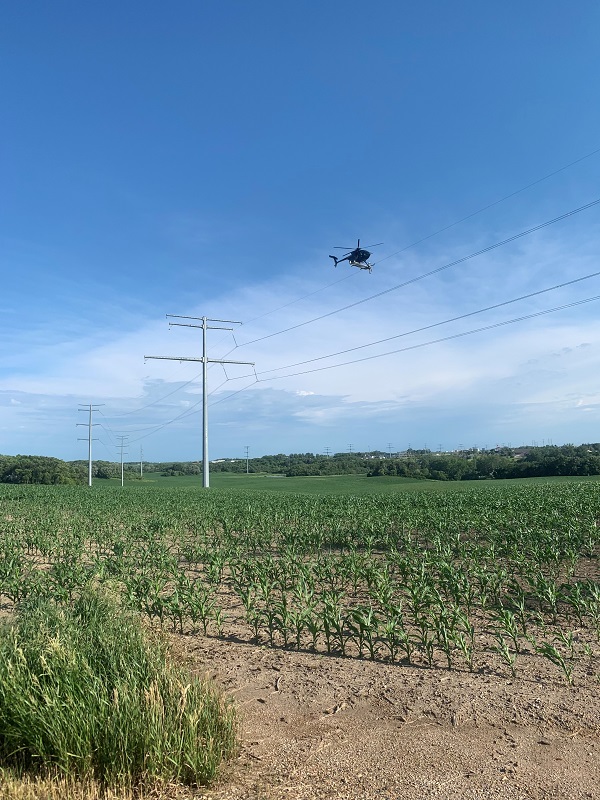Helicopters provide a great way for Great River Energy to both inspect its lines, equipment and right of way, and to make repairs from overhead when needed. In May and June, Great River Energy used helicopters for all these jobs.
Byron Johnson, leader of vegetation management at the cooperative, said efficiency and having a bird’s eye view are advantages to flying.
“Using a helicopter enables you to stop as well, and do a more thorough look if something doesn’t look right,” he said. “You can also cover a lot more area by flying versus on the ground.”
Great River Energy recently hired a company to install bird diverters on a power line just north of Ogilvie, Minnesota, where it spans Ann Lake to prevent birds from flying into the conductors. This segment of line is very challenging to perform work from the ground and bucket trucks because of the location in a lake.

Kellen Gullickson, leader of transmission construction, said the structures are 50 feet from the roadway, which made using a helicopter the best option.
“Because this area is a flow way, the lake does not freeze well, which eliminates the option of performing the work in frozen conditions,” he said. “A helicopter was the most cost effective and practical way to install the bird flight diverters.”
The contractor was able to install 150 bird flight diverters in 90 minutes. Gullickson said that with a conventional line crew, this work would have taken multiple days due to the challenging site conditions.
A helicopter was also used to fly lines impacted by the severe weather events in May and June. This resulted in faster storm damage assessment and facilitated repair prioritization of the damaged line sections. Aerial patrols were also requested for several power lines in storm path areas to identify potential tree or power line issues.
During the assessment of a section of a 345-kilovolt (kV) power line near Alexandria, Minnesota, it was discovered that fiber optic wire had been struck by lightning, breaking the outer strands at each location. After an engineering review, it was determined that the wire could be repaired most effectively by using a helicopter. The helicopter contractor was able to perform the work with the line energized and completed it within three days.
Great River Energy vegetation management employees also used a helicopter service to patrol approximately 1,673 miles of high-voltage power lines that Great River Energy owns or maintains. These patrols offer an efficient overhead view of the land around and under transmission lines, which helps identify future vegetation management needs.
All power lines operated at 200-kV or higher must be inspected annually to comply with standards set by the North American Electric Reliability Corporation.
Johnson said crews in the air are looking for trees that are dead, weak, leaning or diseased as well as vegetation close to the conductors that may interact with the powerline if it falls or grows closer.
 " data-object-fit="cover">
" data-object-fit="cover">